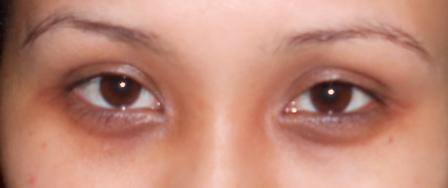The holy grail of proper make-up application would always be the clean and even application of foundation to your face that will even out your skin tone and create a flawless appearance. However, everyone hits a bump when dealing with dark circles. If you have read our earlier article, we'll go in depth with this series of articles to finally get rid or your dark under eye circles.
Yes, there are a lot of videos online that will seemingly show you how to cover up all those dark circles by packing on tons of products to mask this discoloration under the eyes. But when exposed to the sun or the elements that we encounter – change in temperature, stress, dust, and perspiration.
In the end, we will realise that that perfect packed up look creases with facial movement, disintegrates when under the sun, or even oils up worse than normal when we undergo stress.
So what do we do now? First, we have to realize that make-up differs from person to person because of our unique physiology and personal experiences. Make up should help us look naturally fresh … for a long period of time.
Understanding this unique physiology will allow us to understand what we need to address the correction we need to achieve the flawless natural look. This will be the first of many articles that will help you beginning with those dark under eyes.
To take the first step, one has to understand what composes that area under our eyes.
The skin under our eyes is one of the thinnest and most sensitive areas of the body. This skin area doesn’t have as many oil glands and collagen as the rest of the face and body making it prone to dryness – ergo, more prone to reveal signs of aging like fine lines and wrinkles.

Thanks to healthline.com for the following causes of dark circles.
Fatigue
Oversleeping, extreme fatigue, or just staying up a few hours past your normal bedtime can cause dark circles to form under your eyes. Sleep deprivation can cause your skin to become dull and pale, allowing for dark tissues and blood vessels beneath your skin to show.
Lack of sleep can also cause fluid to build underneath your eyes, causing them to appear puffy. As a result, the dark circles you see may actually be shadows cast by your puffy eyelids.
Age
Natural aging is another common cause of those dark circles beneath your eyes. As you get older, your skin becomes thinner. You also lose the fat and collagen needed to maintain your skin’s elasticity. As this occurs, the dark blood vessels beneath your skin become more visible causing the area below your eyes to darken.
Eye strain
Staring at your television or computer screen can cause significant strain on your eyes. This strain can cause blood vessels around your eyes to enlarge. As a result, the skin surrounding your eyes can darken.
Allergies
Allergic reactions and eye dryness can trigger dark circles. When you have an allergic reaction, your body release histamines as a response to harmful bacteria. Other than causing uncomfortable symptoms — including itchiness, redness, and puffy eyes — histamines also cause your blood vessels to dilate and become more visible beneath your skin.
Allergies can also increase your urge to rub and scratch the itchy skin around your eyes. These actions can worsen your symptoms, causing inflammation, swelling, and broken blood vessels. This can result in dark shadows beneath your eyes.
Dehydration
Dehydration is a common cause of dark circles under your eyes. When your body is not receiving the proper amount of water, the skin beneath your eyes begins to look dull and your eyes look sunken. This is due to their close proximity to the underlying bone.
Sun overexposure
Overexposure to the sun can cause your body to produce an excess of melanin, the pigment that provides your skin with color. Too much sun — particularly for your eyes — can cause pigmentation in the surrounding skin to darken.
Genetics
Family history also plays a part in developing dark circles under your eyes. It can be an inherited trait seen early in childhood, and may worsen as you age or slowly disappear. Predispositions to other medical conditions — such as thyroid disease — can also result in dark circles beneath your eyes.
When you have identified the actual cause of your dark circles, you can now embark on a process that can help you rectify the situation. In our next article, we’ll give you some tips on how to address your dark circles.
If you have some ideas, write to us! We’d want to read from you! Till next article.
--------------------------
REFERENCES:
https://www.everydayhealth.com/skin-beauty/specific-guide-to-caring-for-the-skin-around-your-eyes/
https://www.mediniche.com/ocularskincare.html
https://introlift.com/11-ways-to-thicken-the-skin-under-your-eyes/
https://www.healthline.com/health/dark-circle-under-eyes#causes